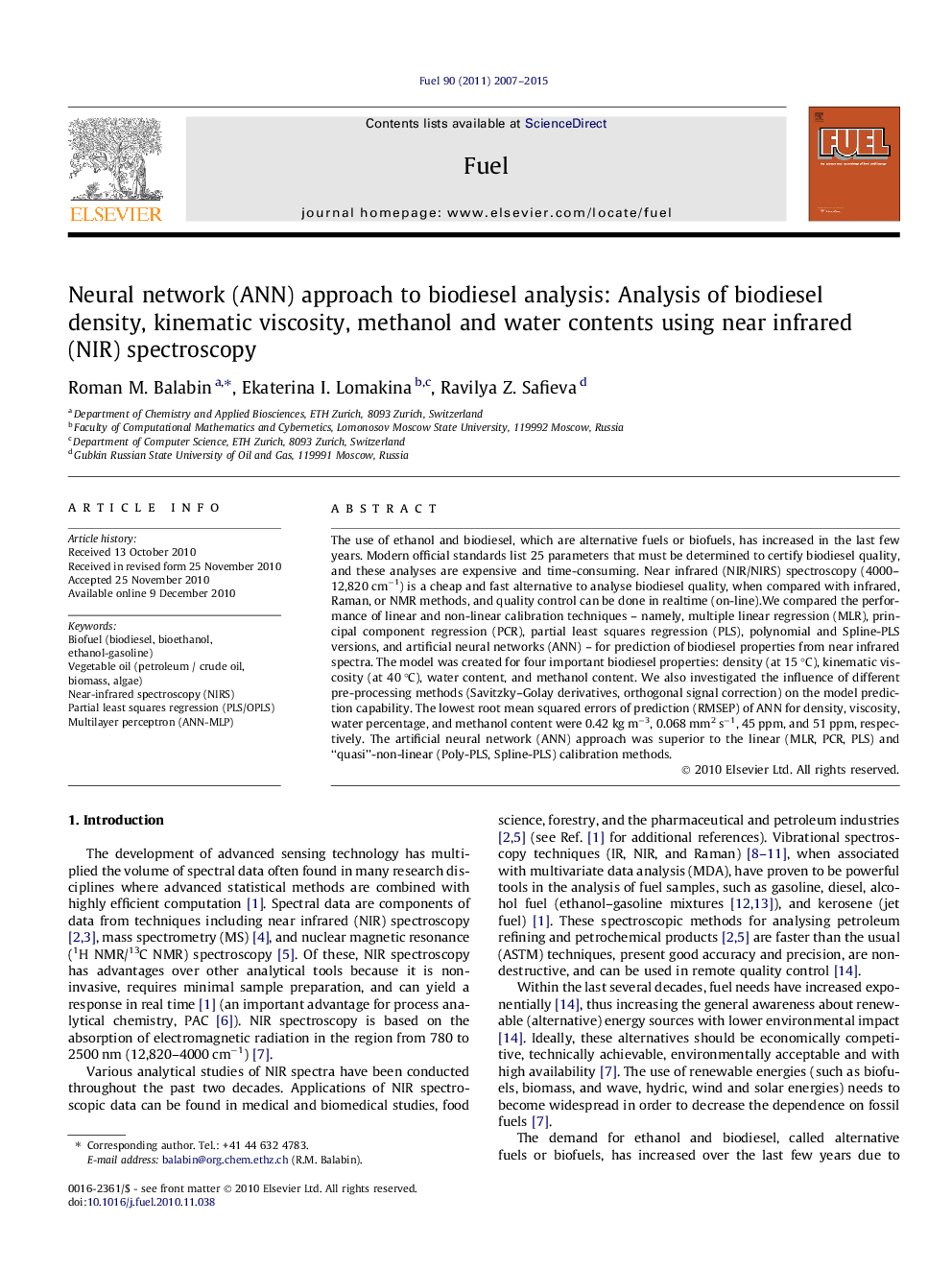| Article ID | Journal | Published Year | Pages | File Type |
|---|---|---|---|---|
| 206775 | Fuel | 2015 | 9 Pages |
The use of ethanol and biodiesel, which are alternative fuels or biofuels, has increased in the last few years. Modern official standards list 25 parameters that must be determined to certify biodiesel quality, and these analyses are expensive and time-consuming. Near infrared (NIR/NIRS) spectroscopy (4000–12,820 cm−1) is a cheap and fast alternative to analyse biodiesel quality, when compared with infrared, Raman, or NMR methods, and quality control can be done in realtime (on-line).We compared the performance of linear and non-linear calibration techniques – namely, multiple linear regression (MLR), principal component regression (PCR), partial least squares regression (PLS), polynomial and Spline-PLS versions, and artificial neural networks (ANN) – for prediction of biodiesel properties from near infrared spectra. The model was created for four important biodiesel properties: density (at 15 °C), kinematic viscosity (at 40 °C), water content, and methanol content. We also investigated the influence of different pre-processing methods (Savitzky–Golay derivatives, orthogonal signal correction) on the model prediction capability. The lowest root mean squared errors of prediction (RMSEP) of ANN for density, viscosity, water percentage, and methanol content were 0.42 kg m−3, 0.068 mm2 s−1, 45 ppm, and 51 ppm, respectively. The artificial neural network (ANN) approach was superior to the linear (MLR, PCR, PLS) and “quasi”-non-linear (Poly-PLS, Spline-PLS) calibration methods.
